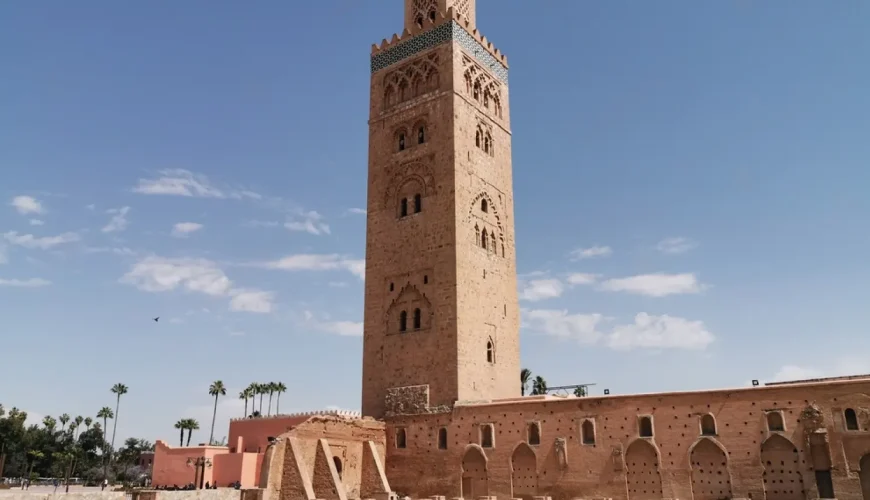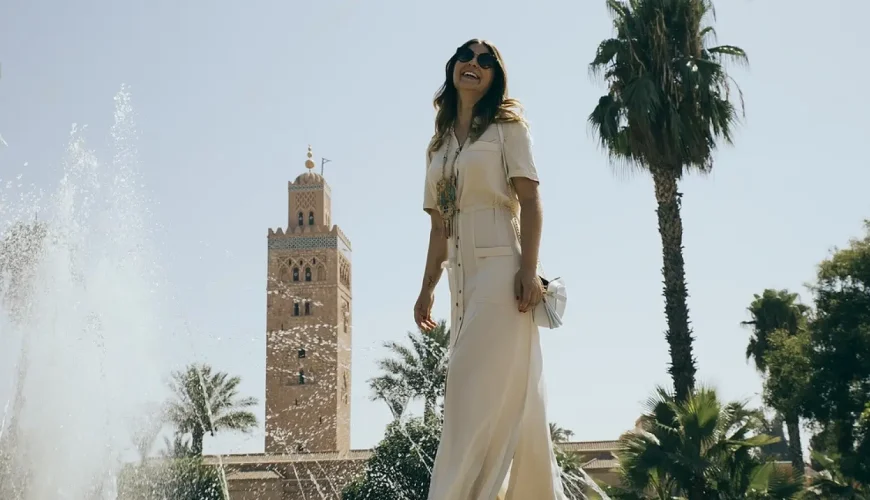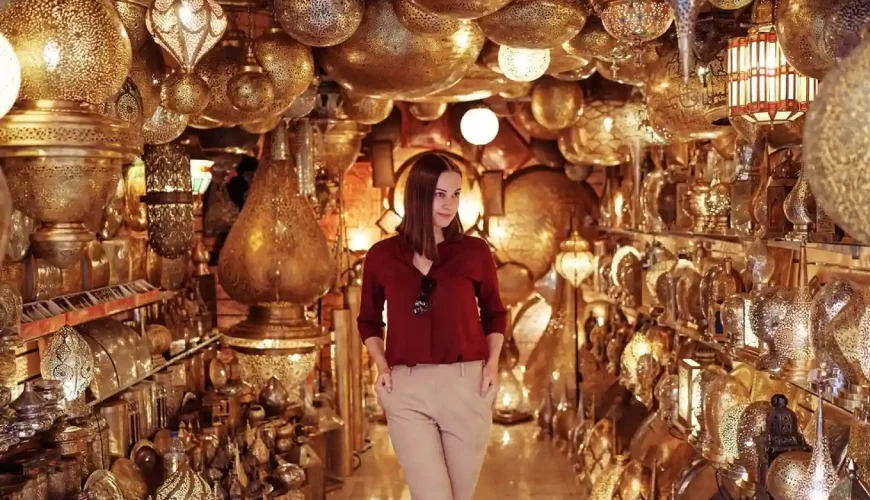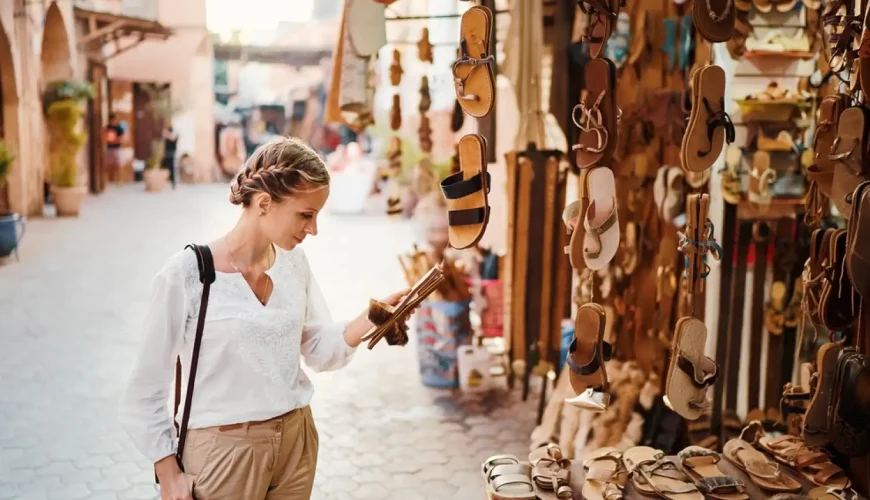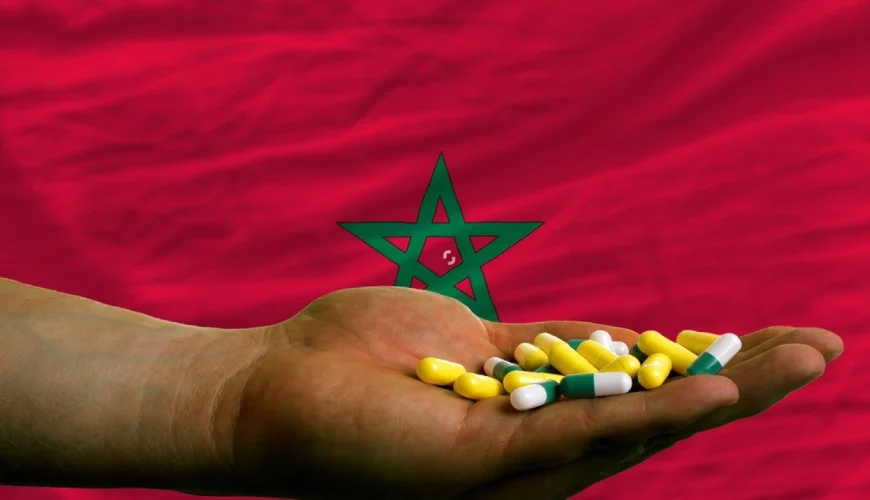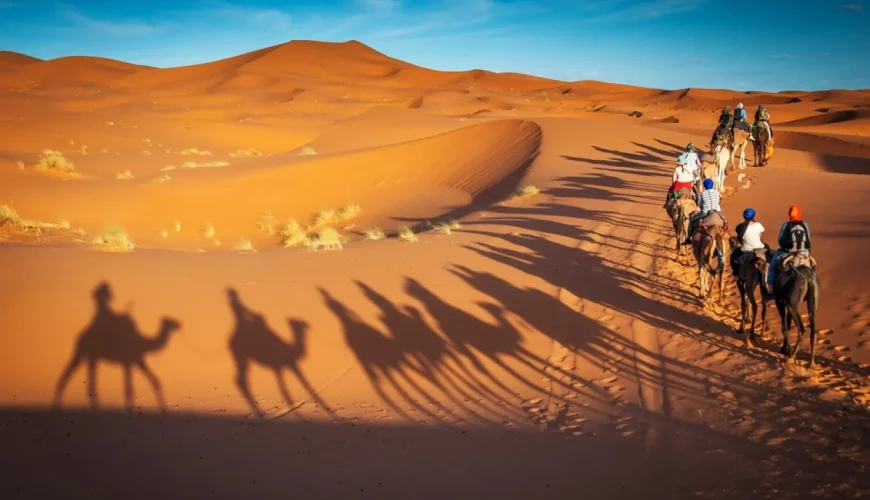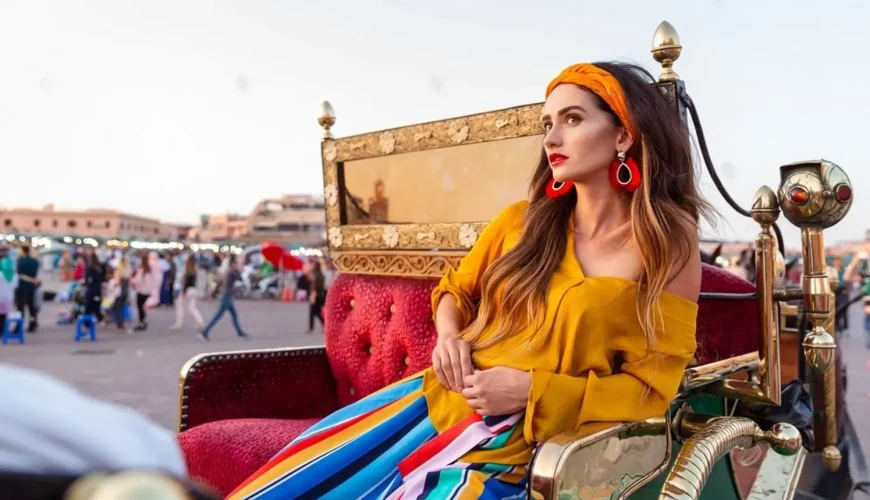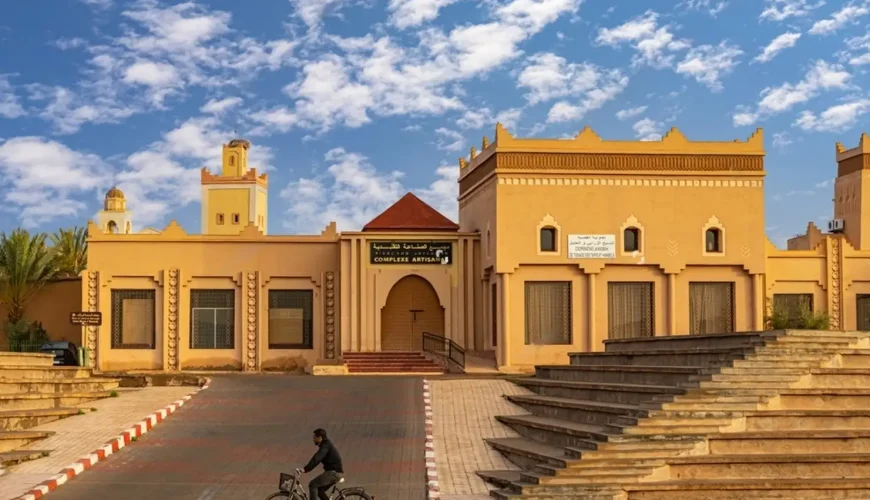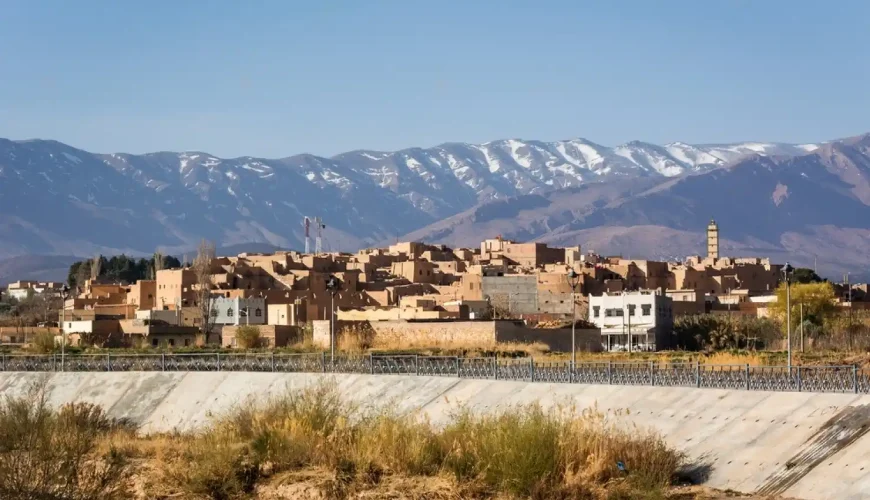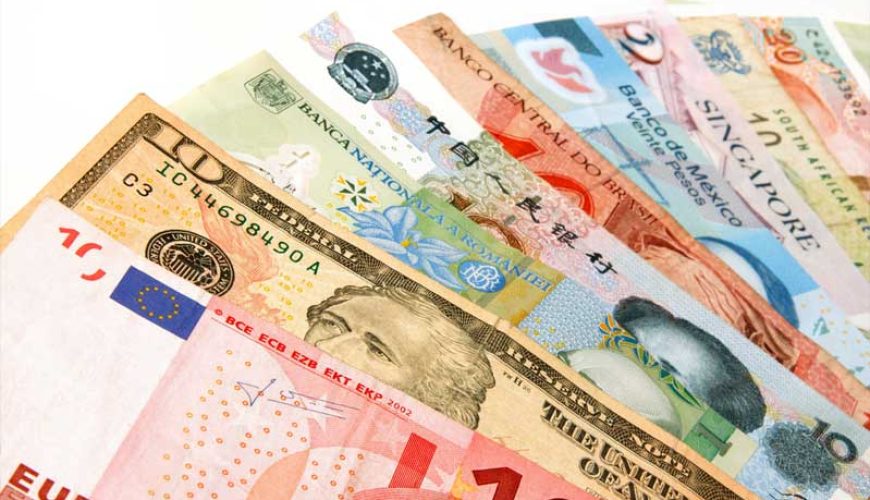What to see in Morocco in a Week
What to See in Morocco in a Week Planning a one-week trip to Morocco? You’re in for an adventure! Morocco is rich in culture, history, and stunning landscapes, offering a variety of experiences from bustling cities to serene deserts. Here’s a suggested itinerary that highlights the must-see destinations during your week in Morocco. Day 1: Arrive in Marrakech Kick off your journey in Marrakech, one of Morocco’s most vibrant cities. Upon arrival, explore the famous Jemaa el-Fnaa, a bustling square filled with street performers, food stalls, and local artisans. Must-See Attractions: Koutoubia Mosque: The largest mosque in Marrakech, noted for its impressive minaret. Majorelle Garden: A beautiful garden that showcases exotic plants and vibrant colors. For accommodation options, what to see in Morocco in a week check out our guide on Top Hotels in Marrakech. Day 2: Explore Marrakech Spend your second day diving deeper into the cultural heritage of Marrakech. Visit the Medina: Wander through narrow streets, shop for souvenirs, and visit local artisans. Saadian Tombs: Discover the ornate tombs of the Saadian dynasty. El Badi Palace: Explore the ruins of this once-grand palace. For historical insights, read our article on Historical Sites in Marrakech. Day 3: Day Trip to the Atlas Mountains On your third day, embark on a day trip to the Atlas Mountains for breathtaking views and hiking opportunities. Highlights: Imlil Valley: A popular starting point for treks in the Atlas. Berber Villages: Experience traditional Berber culture and hospitality. For guided tours and more information, visit our guide on Atlas Mountains Tours. Day 4: Travel to Fes After exploring Marrakech, head to Fes, renowned for its well-preserved medieval architecture and vibrant souks. Must-See Attractions: Fes el-Bali: The oldest part of the city, a UNESCO World Heritage site filled with narrow streets and historic buildings. Bou Inania Madrasa: An impressive religious school featuring stunning architecture. Check out our article on Things to Do in Fes for more recommendations. Day 5: Explore Fes Spend a full day delving into the rich history of Fes. Tanneries: Visit the famous tanneries and witness the traditional leather-making process. Al Quaraouiyine University: Recognized by UNESCO as the oldest existing degree-granting university in the world. For culinary recommendations, explore our guide on Dining in Fes. Day 6: Visit Chefchaouen On day six, take a scenic drive to Chefchaouen, known for its striking blue-washed buildings and relaxed atmosphere. Must-See Attractions: Kasbah Museum: Discover the history of the region. Ras Elma: A beautiful natural spring, perfect for relaxation. For more on what to do in Chefchaouen, check our article on Visiting Chefchaouen. Day 7: Sahara Desert Adventure Conclude your week with an unforgettable adventure in the Sahara Desert. Many tours start from Marrakech or Fes and include camel treks and overnight stays in Berber tents. Highlights: Merzouga Dunes: Experience stunning sand dunes at sunset. Stargazing: Spend the night under the stars, enjoying the vastness of the desert sky. For desert tour options, see our guide on Sahara Desert Tours. Conclusion: A Memorable Week in Morocco In just one week, you can experience the best of Morocco, from the vibrant streets of Marrakech to the tranquil blue streets of Chefchaouen and the majestic Sahara Desert. Each destination offers unique experiences that showcase the country’s rich culture and stunning landscapes. For more travel tips and insights, check out our articles on Traveling Tips for Morocco and Cultural Etiquette in Morocco. Visit Morocco – Official Travel Guide Things to Do in Morocco Morocco Travel Guide
What to do in Morocco in March
What to Do in Morocco in March Visiting Morocco in March offers a unique experience as the weather is generally mild and pleasant, making it an ideal time for exploration. Here’s a guide on what to do in Morocco in March to make the most of your trip. Enjoy the Spring Weather March marks the beginning of spring in Morocco, with temperatures ranging from 15°C to 25°C (59°F to 77°F). This is the perfect time to enjoy outdoor activities. Hiking in the Atlas Mountains: The snow is melting, revealing stunning landscapes. Trails become accessible, making it ideal for hiking. Check out our guide on Hiking in the Atlas Mountains for the best routes. Explore Marrakech Marrakech is a must-visit city, and in March, the crowds are smaller than in peak season. Visit the Majorelle Garden: A beautiful garden that comes alive with blooming flowers in March. Experience Jemaa el-Fnaa: Enjoy the vibrant atmosphere with street performances, food stalls, and local crafts. For more tips on what to do in Marrakech, visit our article on Things to Do in Marrakech. Discover Essaouira Take a day trip to Essaouira, a coastal city known for its charming medina and relaxed vibe. What to Do: Stroll along the ramparts, visit the historic medina, and relax on the beach. The winds in March are perfect for kite surfing and windsurfing. For more on Essaouira, check out our guide on Visiting Essaouira. Visit Fes Fes is another city rich in history and culture. March is a great time to explore its many attractions. Must-See Sites: Fes el-Bali: A UNESCO World Heritage site filled with narrow streets and traditional architecture. Tanneries: Visit the famous leather tanneries for an authentic experience. Learn more about what to see in Fes in our article on Things to Do in Fes. Experience the Sahara Desert March is an excellent time to visit the Sahara Desert, as temperatures are moderate, making camel trekking comfortable. What to Do: Book a camel tour to experience the stunning dunes of Merzouga. Spend a night in a Berber tent under the stars for an unforgettable experience. For more information, see our guide on Sahara Desert Tours. Participate in Local Festivals March is also when several local festivals take place, offering a unique insight into Moroccan culture. Gnaoua World Music Festival: Although the main festival is in June, pre-festival events often begin in March, showcasing local music and dance. For updates on festivals, visit the Official Morocco Tourism Website. Conclusion: Enjoy Your Trip to Morocco in March In March, Morocco is vibrant with color and life, making it an excellent time for exploration. From the bustling streets of Marrakech to the tranquil beaches of Essaouira and the majestic Sahara, there’s something for everyone. Make sure to plan your activities and take advantage of the mild weather to fully enjoy your trip. For more travel tips, check out our articles on Traveling Tips for Morocco and Cultural Etiquette in Morocco. Visit Morocco – Official Travel Guide Morocco Travel Guide Things to Do in Morocco
What to buy in morocco and how much to pay
Morocco is a shopper’s paradise—a land where vibrant markets meet centuries-old traditions, and every alleyway tells a story. Whether you’re wandering through the labyrinthine souks of Marrakech or exploring boutique shops in Fez, knowing what to buy in Morocco and how much to pay can make your shopping experience both enjoyable and budget-friendly. In this comprehensive guide, we’ll walk you through the best buys, from intricate Moroccan jewelry to luxurious leather goods, and even show you what 100 Moroccan dirhams can get you. Let’s get started on your ultimate shopping adventure! Moroccan Jewelry: Shimmering Traditions and Unique Prices Moroccan jewelry is more than just an accessory—it’s a piece of cultural heritage that has been passed down through generations. From silver to intricately designed berber pieces, the markets offer a dazzling array of options. What to Buy in Morocco? Jewelry: Berber Silver Jewelry: Known for its bold, geometric designs, Berber silver jewelry often comes as bracelets, necklaces, and earrings. Prices can vary widely depending on craftsmanship and rarity, typically ranging between 300 to 1300 Moroccan dirhams for small pieces and much higher for larger, intricately designed items. Gold Accents: While pure gold pieces are less common, you’ll find beautifully designed jewelry featuring gold accents on silver. These pieces are perfect for special occasions and can range from 500 to 2500 Moroccan dirhams. Semi-Precious Stones: Many Moroccan jewelry pieces are embellished with semi-precious stones such as turquoise and amber. The prices for these items usually start at 300 dirhams and can rise depending on the quality and craftsmanship. Key Takeaway: Moroccan jewelry is rich in history and craftsmanship. Always negotiate and compare prices across vendors for authentic pieces, and remember that higher price does not always guarantee better quality. Customize your Tour to Morocco Local Clothes Shopping in Morocco: Traditional Attire Meets Modern Trends The clothing available in Morocco reflects its rich cultural tapestry, blending traditional designs with contemporary trends. For travelers, picking the right piece can be both a fashion statement and a souvenir of the Moroccan experience. Safety and Payment Advice Djellabas: These long, hooded robes are not only a traditional garment but also a comfy piece to wear while exploring busy markets. Prices typically range from 350 to 2500 Moroccan dirhams, depending on material and embellishments. Kaftans: For those looking for a touch of elegance, Moroccan kaftans offer both comfort and style. High-quality kaftans can cost anywhere from 700 to 3000 Moroccan dirhams, especially if they are hand-embroidered. Modern Moroccan Fashion: Boutique shops in cities like Casablanca and Marrakech feature modern interpretations of traditional wear. Prices here may be slightly higher, reflecting unique designs and quality fabrics, typically starting at 400 dirhams. Key Takeaway: When shopping for clothes in Morocco, consider not only the style but the story behind each garment. Look out for authentic handcrafted textiles and enjoy the bargaining process that is part of the shopping culture. Marrakech Souk Price List: Navigating the Heart of Moroccan Markets No discussion on Moroccan shopping would be complete without highlighting the Marrakech souks. These bustling markets are a riot of colors, sounds, and scents, offering everything from spices to handicrafts. Tips for Bargaining at the Souks Start Low: Begin with an offer well below the asking price—sellers often set prices high, expecting negotiation. Walk Away: If the price isn’t right, don’t be afraid to walk away. Sometimes, the seller might call you back with a better offer. Do Your Research: Having an idea of the average prices—be it for jewelry, carpets, or leather goods—can give you a strong negotiating position. Popular Items and Their Prices Ceramics and Pottery: Prices typically range from 450 to 6000 Moroccan dirhams, depending on the intricacy of the design and quality of the glaze. Traditional Lanterns: These decorative pieces, often made of wrought iron and colored glass, are sold between 400 and 1800 dirhams. Textiles and Carpets: As mentioned earlier, prices vary widely. Smaller textiles can be found for 2500 to 5000 dirhams, while traditional carpets can start at around 15000 dirhams and soar much higher. Key Takeaway: The Marrakech souks are not just a shopping destination but an immersive cultural experience. Patience and practice in bargaining are crucial to finding great deals. Check some of our best Tours to Morocco 15 Days Tour from Casablanca 5 (30 Reviews) Form $1.400,00 Featured Morocco Itinerary 14 Days | Ultimate Tour 5 (30 Reviews) Featured Form $1.350,00 10 Days Tour from Casablanca 5 (30 Reviews) Featured Form $900,00 Bags to Buy in Morocco: Stylish and Durable Options When it comes to bags, Morocco offers an impressive selection that ranges from everyday carryalls to elegant evening clutches. Popular Bag Options Leather Bags: Renowned for quality and craftsmanship, Moroccan leather bags are a must-buy. They come in various styles—from messenger bags to handbags—with prices generally starting around 400 dirhams and going up to 2500 dirhams for designer cuts. Learn more about where to buy leather in Morocco to ensure you get an authentic deal. Handcrafted Pouches: These versatile accessories can serve as makeup bags or small wallets. They are often intricately embroidered and priced at 150 to 400 dirhams. Beach Bags and Tote Bags: Ideal for a day out by the sea or market shopping, these bags are both practical and stylish, priced roughly between 300 and 500 dirhams. Key Takeaway: Always inspect the quality of the craftsmanship in bags and be ready to negotiate for the best price. Morocco’s markets are ideal for finding both everyday and statement pieces. Where to Buy Leather in Morocco: A Closer Look at Authentic Goods Moroccan leather is celebrated around the world for its durability and unique finish. Whether you’re in the mood for a bag, jacket, or accessories, knowing where to buy authentic leather is key. Top Spots for Leather Shopping Fez Leather Tanneries: Fez is world-famous for its centuries-old leather tanning processes. Many shops here offer direct purchases from tanneries, ensuring authenticity. Prices here vary widely, so be sure to ask for a detailed breakdown. Marrakech Souks: In Marrakech, leather goods are
What to pack for a 2-week trip to Morocco
What to Pack for a 2-Week Trip to Morocco Planning a two-week adventure in Morocco requires careful packing to ensure you’re prepared for the diverse experiences that await you. From bustling cities to tranquil deserts, here’s a guide on what to pack for a 2-week trip to Morocco. 1. Clothing Essentials Lightweight Layers: Morocco’s climate varies greatly from region to region, so packing lightweight layers is essential. T-shirts and Long-Sleeve Shirts: For daytime wear, consider breathable fabrics. Pants and Long Skirts: Loose-fitting pants or long skirts are recommended, especially in rural areas and religious sites. Sweater or Light Jacket: Evenings can be chilly, especially in the desert and mountains. Tip: Check out our article on Cultural Etiquette in Morocco for dressing appropriately. 2. Footwear Comfortable Walking Shoes: Morocco is best explored on foot, so bring comfortable shoes for city walking and hiking. Hiking Boots: If you plan to explore the Atlas Mountains, a good pair of hiking boots is essential. Sandals or Flip-Flops: Perfect for relaxing at your accommodation or visiting the beach. 3. Accessories Sun Protection: Sunglasses: Protect your eyes from the bright Moroccan sun. Wide-Brimmed Hat: Ideal for keeping the sun off your face during outdoor excursions. Travel Gear: Daypack: A small backpack for day trips and city explorations. Reusable Water Bottle: Stay hydrated, especially in the warmer months. Consider one with a built-in filter. 4. Toiletries and Health Items Basic Toiletries: Shampoo, conditioner, soap, toothbrush, and toothpaste. Sunscreen: High SPF sunscreen is crucial for sun protection. Medications: Any personal medications, plus basic first-aid supplies like band-aids, pain relievers, and any necessary prescription medications. 5. Electronics Universal Travel Adapter: Morocco uses Type C and Type E plugs, so a universal adapter will be handy. Camera: Capture the stunning landscapes and vibrant city life. Don’t forget extra memory cards and batteries. Portable Charger: Keep your devices powered up while on the go. 6. Travel Documents Passport and Visa: Ensure your passport is valid for at least six months beyond your planned departure date. Most nationalities don’t require a visa for stays under 90 days. Travel Insurance: Keep a copy of your insurance policy and contact information. Emergency Contacts: Have a list of important phone numbers, including local emergency services. 7. Money and Payment Local Currency (Dirhams): While credit cards are accepted in larger cities, it’s a good idea to carry cash for smaller vendors and rural areas. Money Belt: For added security, consider using a money belt to keep your cash and important documents safe. 8. Optional Items Travel Guidebook: A guidebook can provide valuable insights and recommendations. Check our review of Top Morocco Travel Guides. Notebook and Pen: Document your travel experiences and keep track of important information. Conclusion: Pack Smart for Your Moroccan Adventure Packing for a two-week trip to Morocco can be straightforward with the right items. Focus on lightweight clothing, comfortable shoes, and essential travel documents. Remember to embrace the local culture by dressing appropriately and being prepared for various climates. Enjoy your adventure! For more travel tips, check out our articles on Traveling Tips for Morocco and Local Customs and Etiquette. Visit Morocco – Official Travel Guide Travel Advice for Morocco Morocco Packing Guide
Medicines to bring to Morocco
Medicines to Bring to Morocco When traveling to Morocco, it’s essential to be prepared for any health-related issues that may arise. While you can find many medications in local pharmacies, it’s wise to bring your own supply of essential medicines. This guide will help you understand what medicines to bring to Morocco for a safe and healthy trip. 1. Prescription Medications What to Bring: If you take any prescription medications, make sure to bring enough for your entire trip, along with a copy of your prescriptions. Tips: Keep medications in their original packaging with the prescription label. Consider carrying a doctor’s note, especially for controlled substances. 2. Over-the-Counter (OTC) Medications Here are some common OTC medications that can be useful during your travels: Pain Relievers: Bring acetaminophen (Tylenol) or ibuprofen for headaches, muscle aches, or fever. Antihistamines: If you suffer from allergies, pack antihistamines like loratadine (Claritin) or cetirizine (Zyrtec). Digestive Aids: Bring medications for stomach issues, such as loperamide (Imodium) for diarrhea and antacids for indigestion. For more tips on managing travel-related ailments, check out our article on Travel Health Tips. 3. First-Aid Supplies Basic First-Aid Kit: Assemble a compact first-aid kit with the following items: Band-aids: For minor cuts and scrapes. Gauze and Adhesive Tape: For larger wounds. Antiseptic Wipes: To clean cuts and prevent infection. Hydrocortisone Cream: For itching and rashes. Tweezers and Scissors: For splinters and cutting tape. 4. Motion Sickness Remedies What to Bring: If you’re prone to motion sickness, consider packing: Dimenhydrinate (Dramamine): This medication can help prevent and relieve symptoms of motion sickness. Ginger Tablets: A natural remedy that can also alleviate nausea. 5. Vaccinations and Preventative Medicines Before traveling to Morocco, check if you need any vaccinations. Common recommendations include: Hepatitis A and B Typhoid Fever Tetanus-Diphtheria (make sure your routine vaccinations are up-to-date) For more information on recommended vaccines, visit the Centers for Disease Control and Prevention (CDC). 6. Mosquito Repellent What to Bring: In certain regions of Morocco, especially during warmer months, mosquitoes can be a nuisance. Insect Repellent: Look for products containing DEET or picaridin to protect against bites. For tips on preventing insect bites while traveling, see our article on Avoiding Insect Bites. 7. Water Purification Tablets What to Bring: To ensure safe drinking water, consider carrying water purification tablets, especially if you plan on hiking or staying in remote areas. Conclusion: Stay Healthy While Traveling Packing the right medicines for your trip to Morocco can help ensure a smooth and enjoyable experience. Always consult with your healthcare provider before traveling to discuss any specific health concerns and to obtain prescriptions for necessary medications. For more travel health advice, explore our articles on Traveling with Medications and Health Tips for Travelers. Visit Morocco – Official Travel Guide CDC Travel Health Information for Morocco World Health Organization – Health Advice for Travelers
Where to Ride Camels in Morocco
Where to Ride Camels in Morocco Riding camels in Morocco is an unforgettable experience that allows you to explore the country’s stunning landscapes in a traditional way. From the Sahara Desert to the coastal dunes, here’s a guide on where to ride camels in Morocco and what to expect from your journey. 1. Erg Chebbi Dunes Location: Near Merzouga, in the southeast of Morocco. Why Go: Erg Chebbi is famous for its stunning sand dunes, which rise up to 150 meters high and shift colors throughout the day. Riding a camel at sunrise or sunset offers a magical experience against the backdrop of golden sands. Camel Trekking Tours: Many local tour operators offer guided camel treks ranging from short rides to multi-day adventures. You can spend the night in traditional Berber tents under a starry sky. Learn More: Check out our guide on Camel Trekking in Erg Chebbi for more details. 2. Erg Lihoudi Location: Near the town of Foum Zguid, south of the Anti-Atlas Mountains. Why Go: Erg Lihoudi is a less crowded option than Erg Chebbi, offering a more intimate camel riding experience. The landscape here is beautiful, with rolling dunes and rocky terrain. Activities: In addition to camel riding, visitors can enjoy hiking and exploring the nearby oases. 3. Agafay Desert Location: Just a short drive from Marrakech. Why Go: The Agafay Desert offers a unique experience with its rocky landscapes and stunning views of the Atlas Mountains. It’s an excellent choice for those short on time, as it’s easily accessible from Marrakech. Camel Riding Options: Many tour companies offer half-day trips, including camel rides and traditional Moroccan meals. Consider booking a sunset ride for a truly memorable experience. More Information: Discover our article on Exploring the Agafay Desert for tips on activities and tours. 4. Dades Valley Location: Near the town of Boumalne Dades. Why Go: The Dades Valley is known for its breathtaking landscapes, including dramatic gorges and lush palm groves. Riding camels here allows you to experience the beauty of this region up close. Guided Tours: Several local operators offer camel rides along with guided tours of the valley, including visits to traditional villages. 5. Taghazout Beach Location: Near Agadir on the Atlantic Coast. Why Go: For a unique experience, consider riding camels along the beach at Taghazout. This coastal town is famous for its surf culture and beautiful beaches. Camel Riding Experience: You can book camel rides that take you along the beach, allowing you to enjoy the ocean breeze and stunning views of the coastline. Conclusion: Experience the Magic of Camel Riding Riding camels in Morocco is more than just a fun activity; it’s an opportunity to connect with the country’s rich culture and stunning natural beauty. Whether you choose the iconic dunes of Erg Chebbi or the rocky terrain of Agafay, each experience offers something unique. For more travel tips in Morocco, check out our articles on Cultural Etiquette in Morocco and Best Desert Tours in Morocco. Visit Morocco – Official Travel Guide Morocco Camel Trekking Tours Atlas Mountains and Agafay Desert Tours
What to Wear in Morocco in April
Why Knowing What to Wear in Morocco in April Matters? Planning what to wear in Morocco in April isn’t just about looking good; it’s also about respecting local customs and preparing for a variety of weather conditions. Spring in Morocco strikes a pleasant balance between warm, sunny days and cooler evenings. However, temperatures can differ significantly depending on whether you’re on the coast, in a bustling city, atop a mountain, or out in the desert. Understanding these variations will help you pack more efficiently and ensure you’re comfortable throughout your trip. General Climate Overview Most parts of Morocco enjoy mild to warm daytime temperatures in April, often ranging from the mid-60s to mid-70s Fahrenheit (about 18-24°C). Nights can get chilly, so having a light jacket or cardigan is a good idea. Rain is usually minimal this time of year, but it’s always wise to pack a compact umbrella or a waterproof layer, especially if you plan to visit more northern cities like Tangier or Tetouan. Coastal Areas (e.g., Casablanca, Essaouira): Generally cooler and breezier; consider packing a windbreaker or slightly thicker sweater for evening strolls along the water. Inland Cities (e.g., Marrakech, Fez): Temperatures can be warmer during the day. Be prepared with breathable fabrics but keep a light jacket on hand for cooler nights. Mountain Regions (e.g., Atlas Mountains): Temperatures drop significantly at higher altitudes. If you plan a trekking adventure, pack a heavier jacket or layers. Desert Regions (e.g., Sahara, Merzouga): Expect warm days that are perfect for light, airy clothing. Evenings can cool down rapidly, so don’t skip packing something warm. What to Wear in Marrakech in April? Marrakech is one of Morocco’s most popular destinations, known for its vibrant souks, lush gardens, and the bustling Jemaa el-Fnaa square. If you’re wondering what to wear in Marrakech in April, remember that you’ll likely spend a lot of time walking around the old Medina, exploring palaces, or soaking in the ambiance at rooftop cafés. Daytime Attire Lightweight Tops: Short-sleeved or three-quarter-sleeved shirts in breathable fabrics like cotton or linen will help you stay cool. Comfortable Bottoms: Midi skirts, loose-fitting trousers, or even knee-length shorts (though not too short) work well. Footwear: Closed-toe shoes are recommended for navigating Marrakech’s sometimes dusty, uneven streets. Comfortable sandals are great if you’re used to walking in them. Evening Layers Cardigan or Light Jacket: Temperatures can drop at night, so a stylish, lightweight cardigan or denim jacket is a lifesaver. Scarf: Not only does a scarf keep you warm, but it’s also handy if you want to blend in more discreetly or cover your shoulders when entering religious sites. Customize your Tour to Morocco What to Wear in Fez in April Fez is another cultural gem filled with narrow alleys, artisanal workshops, and ancient madrasas. If you’re curious about what to wear in Fez in April, the city’s climate closely resembles Marrakech’s, but mornings and nights can feel slightly cooler due to Fez’s proximity to mountainous terrain. Exploring the Medina Layer-Friendly Outfits: Bring a thin sweater or shawl to layer over your daytime outfit. The maze-like alleys can be cooler, and many tourist attractions are partially shaded. Comfortable, Non-Slip Footwear: Fez’s old Medina features hilly, winding streets. Opt for closed-toe, rubber-soled shoes for safe footing. Respectful Dress Long, Flowing Skirts or Trousers: These not only look stylish but also align with the city’s more traditional vibe. Scarves: Even if you don’t wear it all day, having a scarf in your bag is handy for visits to religious sites. What to Wear in the Desert in April? The Sahara Desert is a must-see for many travelers, and spring is a fantastic time to visit thanks to warmer days and cooler but manageable nights. If you’re trying to figure out what to wear in the Desert in April, consider both sun protection and nighttime layers. Daytime Essentials Long-Sleeved, Lightweight Tops: Protect your skin from the intense sun with loose, breathable fabrics. Loose Trousers or Long Skirts: Linen pants or maxi skirts keep you cool while offering sun protection. Wide-Brimmed Hat and Sunglasses: These are non-negotiable for shielding your face and eyes. Cooler Evenings Warm Layers: A light but warm fleece or jacket works well when temperatures drop at night. Closed-Toe Shoes or Boots: If you plan to go sandboarding or camel riding, sturdy footwear is your friend. Check some of our best Tours to Morocco 15 Days Tour from Casablanca 5 (30 Reviews) Form $1.400,00 Featured Morocco Itinerary 14 Days | Ultimate Tour 5 (30 Reviews) Featured Form $1.350,00 10 Days Tour from Casablanca 5 (30 Reviews) Featured Form $900,00 What to Wear in Chefchaouen in April? Known as the “Blue City” for its picturesque, blue-painted buildings, Chefchaouen sits in the Rif Mountains, bringing cooler temperatures even in spring. Wondering what to wear in Chefchaouen in April? Here’s what you need: Mountainous Climate Long-Sleeved Shirts and Light Sweaters: Temperatures can be mild during the day but get cool, especially early in the morning or late at night. Comfortable Walking Shoes: The city’s hilly terrain and cobblestone streets mean you’ll be grateful for sneakers or cushioned flats. Stylish yet Modest Layers: Chefchaouen is fairly laid-back, but it’s still important to be respectful. Think casual chic that covers your shoulders and knees. Photo-Ready Outfits Pops of Color: Although the city’s scenery is stunning on its own, a bright scarf or a vibrant bag can make your photos stand out against the blue backdrop. Weather-Appropriate Accessories: Don’t forget a light jacket or cardigan to throw on once the sun sets behind the mountains. Essential Packing Tips Knowing what to wear in Morocco in April means striking a balance between practicality, comfort, and a bit of style. Here’s a quick list to guide your packing: Light Layers: T-shirts, thin sweaters, cardigans, and a travel-friendly jacket. Breathable Fabrics: Cotton, linen, or lightweight synthetic blends to handle daytime warmth. Versatile Footwear: Comfortable closed-toe shoes, sandals with good support, and maybe a pair of dressier flats or loafers for evenings out. Sun Protection: Wide-brimmed
Best Holiday Packages to Morocco
Best Holiday Packages to Morocco Morocco is a land of contrasts, where ancient traditions blend seamlessly with modern life. From the bustling souks of Marrakech to the serene landscapes of the Sahara Desert, the country offers an unforgettable experience for every type of traveler. If you’re planning a trip to this enchanting destination, consider booking one of the best holiday packages to Morocco. These packages often include accommodation, meals, transportation, and guided tours, allowing you to focus on enjoying your adventure. Here’s a look at some of the top holiday packages available. 1. Cultural Discovery Packages Explore Morocco’s rich heritage and vibrant culture with packages designed to immerse you in the local way of life. Here are some excellent options: Morocco Heritage Tour: Companies like G Adventures offer comprehensive cultural tours that include visits to iconic cities such as Marrakech, Fes, and Chefchaouen. These packages often feature guided city tours, cooking classes, and traditional music performances. Cultural Immersion Experiences: Consider packages that allow you to stay with local families or participate in community events. Intrepid Travel provides unique opportunities for travelers to engage with local communities. For more cultural insights, check our article on “Moroccan Traditions and Customs.” 2. Adventure and Nature Packages For adventure enthusiasts, Morocco offers a variety of holiday packages that include thrilling outdoor activities. Here are some top picks: Sahara Desert Adventures: Experience the magic of the Sahara with all-inclusive packages that include camel trekking, sandboarding, and camping under the stars. Desert Morocco Adventure offers tailored experiences that cater to different interests and budgets. Atlas Mountains Treks: Explore the breathtaking scenery of the Atlas Mountains with guided hiking packages. Companies like Trekking in Morocco provide various trekking options suitable for all skill levels. For more information on outdoor activities in Morocco, visit the Moroccan National Tourist Office. 3. Luxury Holiday Packages Indulge in the opulence of Morocco with luxury holiday packages that focus on comfort and exclusive experiences. Here are some luxurious options: Five-Star Resort Stays: Stay at top-tier hotels like La Mamounia in Marrakech, where you can enjoy lavish accommodations, gourmet dining, and spa services as part of your holiday package. Private Guided Tours: Consider luxury packages that offer private guides for a more personalized experience. Abercrombie & Kent specializes in luxury travel and can create bespoke itineraries to suit your preferences. For more on where to stay, check our article on “Top Luxury Hotels in Morocco.” 4. Family-Friendly Packages Traveling with children? Look for holiday packages that cater specifically to families, ensuring that everyone has a memorable experience: Kid-Friendly Resorts: Some resorts, like Club Med Marrakech, offer family-oriented packages with activities for children, ensuring that parents can relax while kids enjoy supervised fun. Family Adventure Tours: Opt for packages that combine cultural experiences with adventure activities. Family Travel Forum has suggestions for family-friendly itineraries in Morocco. For tips on traveling with kids, check out Parents Magazine for helpful travel advice. Conclusion Finding the best holiday packages to Morocco can elevate your travel experience, providing you with the opportunity to explore this fascinating country with ease. From cultural immersions to adventurous treks and luxurious stays, there’s a package to suit every traveler’s needs. Start planning your Moroccan adventure today, and get ready to create lasting memories!
Imouzzer Marmoucha, a Forgotten city in the Middle Atlas Mountains
[vc_row][vc_column][vc_column_text] Just a three-hour drive from the city of Fez, you will discover one of the most beautiful cities nestled in the heart of the Atlas Mountains. The city and its surrounding tribes are inhabited by Amazigh people, the indigenous inhabitants of North Africa prior to the Arab invasion. Named after the large Berber tribe of Marmouchas, the city experiences cold winters and mild summers, thanks to its elevation of 1,713 meters above sea level. Marmouchas and its surrounding regions are rich in artisan crafts and unique products. Additionally, the stunning landscapes make it one of the most beautiful places to visit in Morocco. Immouzzer Marmoucha remains relatively unknown, and most travel agencies do not include it in their packages. However, we plan to establish a presence and feature it among our top destinations in the future. The region is perfect for hikers, offering vast forests of oaks, cedars, and other endemic trees. It also boasts the sublime beauty of Mount Bou Iblane, the second-highest peak in the Middle Atlas, where snow remains year-round. . What to see in Immouzzer Marmoucha? Imouzzer Marmoucha offers plenty of captivating attractions. The surrounding areas are vibrant and enchanting during autumn, spring, and summer. However, it is not advisable to travel during winter, as the region becomes extremely cold—comparable to the conditions in the Alps. The geographic terrain of Imouzzer Marmoucha is both rich and diverse, featuring lush green forests, majestic mountain peaks, picturesque grasslands, and expansive wilderness. From east to west and north to south, this secluded Moroccan village is a treasure trove for nature lovers. Dinosaurs in EL Mers Regions El Merz Valley where Dinosaurs fossils are scattered El Mers is a region located near the fortified village of Serghina, approximately a 40-minute drive from Boulemane city. This area is renowned for its archaeological sites. Notably, traces of the famous dinosaur Iguanodon have been discovered, spread over an area of three hectares. In the valley of “Dinosaurs,” a magical place that reveals a history dating back 150 million years, the traces of ancient life are clearly etched into the stone, offering a unique glimpse into a prehistoric era when dinosaurs once roamed this land. El Merz Valley where Dinosaurs fossils are scattered This site was originally discovered by a local man who uncovered dinosaur fossils in the region. Later, it became the subject of study by the archaeologist Termier, who published his work in 1936.. Termier was the first to examine the fossil bones at El Mers, noting that the red series containing dinosaur and crocodile remains dates back to the Bathonian age. Between 1940 and 1941, another archaeologist named Lapparent further investigated these remains, publishing his findings in 1942 and 1945. The site is beautiful and easily accessible from Fez. The Beautiful Tribe Of Ait Oullagh This idyllic village feels like heaven on earth. It consists of a collection of houses scattered across a vast open space. Surrounded on all sides by mountains, Ait Oullagh offers a tranquil escape from the modern world. Here, there are no cars or modern architecture—only humble houses and expansive apple orchards. You can wander through the fields and savor the pure beauty of nature. Dangerous, yet Beautiful Roads As the saying goes, the world’s most dangerous roads are often carved into the sides of high-altitude mountains—and that holds true for the “Akchour” road, which connects Immouzzer Marmoucha and Ait Youb. In winter, heavy snowfall forces the closure of this slippery road, preventing travel. Built during the colonial era, this road was part of a French initiative to connect major towns and cities in Morocco between 1912 and 1956, facilitating the transfer of weapons and natural resources. For those seeking adventure, this road offers a stunning yet challenging drive. Despite its difficulty, it is safe, with only four recorded accidents in the last decade. Old fortified villages When traveling to Imouzzer Marmoucha, you’ll pass through endless forest landscapes, winding roads, and soaring mountains. If it’s your first time, it may feel as if you’re ascending into the sky. After a one-hour drive from Boulemane city, you’ll reach “Egherm Amkran,” a small village in the Ait Bazza district. This fortified village is reminiscent of a miniature Ait Ben Haddou. Now deserted, it is said to be haunted and stands as one of the region’s top attractions. If you venture a further six kilometers towards Missour, you will come across the site of Mesklate – Aït Bazza. This area is filled with dinosaur bones from various species, discovered over several kilometers and overlooking the village. While these sites are accessible, it is recommended to contact the local site manager before setting off to explore this extraordinary sanctuary. Currently, Morocco Travel does not offer packages to Imouzzer Marmoucha. However, if you are interested in discovering the region, we can arrange a two-day trip. This authentic visit will include the assistance of local guides to enhance your experience. [/vc_column_text][/vc_column][/vc_row]
What Currency is Used in Morocco ?
What Currency is Used in Morocco? When planning your trip, it’s essential to know what currency is used in Morocco. The official currency is the Moroccan dirham (MAD), which divides into 100 centimes. Understanding the currency helps you manage your expenses while enjoying all that Morocco has to offer. Currency Details Symbol: The Moroccan dirham typically appears with the symbol “د.م.” Banknotes: You can find dirhams in denominations of 20, 50, 100, and 200 MAD. Coins: Common coins include 1, 5, 10, 20, and 50 centimes, as well as 1, 2, 5, and 10 dirhams. Currency Exchange Options You can easily exchange money in Morocco through several options: Banks: Major banks offer competitive rates for currency exchange. Check the current exchange rate using reliable sources like XE Currency Converter. Currency Exchange Offices: You will find these in major cities and tourist areas, providing convenient access to cash. ATMs: ATMs are widely available in cities, dispensing dirhams. Look for machines that accept international cards, and notify your bank of your travel plans to avoid any issues. For more information on managing your finances while traveling, check out our post on Travel Budgeting Tips for Morocco. Tips for Using Currency in Morocco Credit and Debit Cards: Use major credit cards at larger hotels, restaurants, and shops. However, carry cash for small purchases, especially in markets (souks) and rural areas. Bargaining: Haggle in markets; it’s common and expected, so feel free to negotiate prices. Keep Small Change: Having small denominations handy helps for tips and small transactions. Conclusion Knowing what currency is used in Morocco is crucial for a smooth travel experience. The Moroccan dirham remains widely accepted, and you have plenty of options for exchanging money. By understanding the currency and how to use it, you can focus on enjoying your Moroccan adventure!


